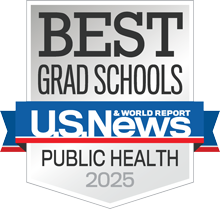Drs. Eric C. Brown and Viviana Horigian were the Principal Investigators of the conference, which was supported by a grant from the Copeland Foundation. The three-day-long conference took place from November 14th to the 16th, 2022. The conference was held in the Expo Center of the Lakeside Village on the Coral Gables campus.
The OAS is the world’s oldest regional organization, and it was established in order to achieve “an order of peace and justice, to promote their solidarity, to strengthen their collaboration, and to defend their sovereignty, their territorial integrity, and their independence," as per their website.
OAS is currently the primary political, juridical, and social governmental forum in the Hemisphere, uniting all 35 independent states of the Americas. CICAD is OAS’s consultative and advisory committee for drug-related policy and prevention issues.
What was planned two years ago and delayed because of the COVID-19 pandemic, became a possibility for OAS country representatives from around the world to gather and discuss the Implementation of Drug Use Prevention Policies and Programs.
The conference, which counted with English and Spanish live translation services, was opened by Jimena Kalawski from OAS/CICAD, who hopes to have these conferences every so often.
“Primarily, the goal of this conference is for all of you to leave with a work plan with the next steps for prevention and how CICAD can be of help,” said Kalawski.
“During the pandemic, there has been a regression in prevention and treatments, as well as being able to keep operating the programs we had available. It is the best moment to think and reflect on what we want for our countries,” she added.
Eric C. Brown, Ph.D., Associate Professor at DPHS, also addressed the audience. “This conference represents a great opportunity for governmental institutions and universities to partner, to be able to advance the conversation and policies discussions with regard to prevention science for substance use.”
Evidence-based Prevention (EBP) vs. Evidence-informed Prevention (EIP)
Prevention science is a relatively new concept where the goal is to delay the onset and slow the escalation of major health and behavior problems, explained Dr. Brown.
EBP is based on statistically proven results; it has undergone testing in rigorous research. EIP, while it does consider evidence-based studies, it supplements them with real-life experiences.
Dr. Brown questions the extent of EBP's application to other populations, such as those in South America and the Caribbean. “Not all nations have the same resources to go through the process of EBP. They can, however, use evidence-informed prevention (EIP) by relying on strong theory, knowing the risk and protective factors, and making necessary linguistic and cultural adaptations to allow for the best possible chance for the intervention to be successful,” he said.
Furthermore, Dr. Brown introduced his Prevention Education and Research in Latin America (PERLA) lab, whose goal is to promote the dissemination and application of science-based prevention of behavioral and health issues throughout Latin America and the Caribbean. Their mission includes:
- Analyzing the risk and mitigating factors that influence or buffer unfavorable health outcomes, such as juvenile drug and alcohol use, violence and delinquency, and depression and anxiety.
- Developing interventions that are extremely successful, culturally appropriate, and suited for the local environment.
- Evaluating the impact of preventive measures to confirm that they are producing the desired results.
- Facilitating high-fidelity implementation of interventions to maximize their impact and to be sustainable for long-term use.
Priority actions of Measures of Prevention, Treatment, and Recovery Support
Kalawski discussed the Development of Integrative Prevention Policies in the Americas, focusing on prevention.
“Mainly, when we talk about drug use prevention, we think of 2 big objectives: prevent initiation of substances or delay the age of onset,” said Kalawski. “For this, we [OAS/CICAD] have certain instruments, the Hemispheric Drug Strategy, and Plan of Action,” which she described as a fan of resources for each member state to work on their country’s necessities.
However, risk factors must be considered. Risk factors include social determining elements, such as inequity, poverty, and lack of access to certain resources, but also the number of liquor stores near schools which transforms into something common. Propaganda, laws, and cultural behaviors are all risk factors as well, explained Kalawski.
To address this, member states build and/or strengthen early warning systems (EWS) to collect data that aids in the development and implementation of successful national drug plans.
Member states also consider the individual needs of at-risk populations when developing drug policies and programs. This allows them to support a human rights framework that takes into account gender, age, and multiculturalism.
Other highlights of the conference included:
- In brief remarks at the beginning of the conference, Viviana E. Horigian, M.D., M.H.A., Professor at DPHS and Director of Public Health Education, welcomed the audience and gave thanks to OAS/CICAD and its members, and wished for a productive conference. “Strengthening international cooperation is perhaps more imperative than ever, as countries will need to work together closely to respond to this threat imposed by drug abuse problems,” she said.
- Charlotte Sisson, Senior Foreign Affairs Officer Drug Demand Reduction US-INL, tuned in via Zoom. She discussed the increasing drug use prevention efforts internationally, and the impact of demand reduction, which extends beyond only drug use showing reductions in crime and violence.
- Adrián Noble, OAS/CICAD, presented via Zoom – Results of the Eighth Evaluation Round of the Multilateral Evaluation Mechanism (MEM) 2021 – Measures of Prevention, Treatment and Recovery Support. The plan of action stands from 2021-2025, with 7 rounds being completed already, including an annual evaluation per round. Some of MEM’s characteristics include: achieving full implementation of the OAS’s Hemispheric Drug Strategy (HDS) and its Plan of Action, measuring individual and collective progress of the member states, and stimulating the development of technical assistance & training programs, exchange of experiences & best practices.
- Pernell Clarke, OAS/CICAD, spoke about the current panorama of drug use in the hemisphere.
Written by Deycha Torres Hernández
Published on December 20, 2022





